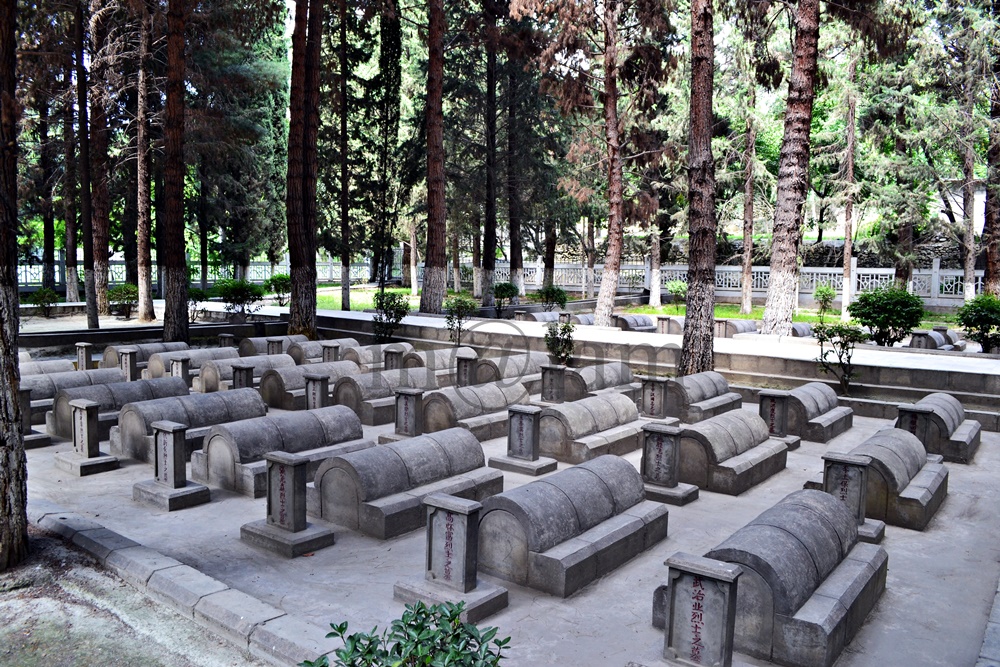Locally known as China Yadgar, the Chinese graveyard (The memorial Park) is the final resting place of mighty Chinese engineers and workers who sacrificed their lives during construction of the mighty Karakoram Highway (KKH) in the 1960s and 1970s. The cemetery is located in Danyore, about 10 km across main Gilgit town – the capital city of Gilgit-Baltistan in Pakistan. To be exact, the graveyard can be accessed in the residential area on the KKH, adjacent to Sehat Foundation Hospital.
Historic Background
The 1300 km (Pakistan: 887 km & China: 413km) Karakoram highway was a joint venture of Pakistani and Chinese workers and Engineers. It cost lives of 810 Pakistanis and about 200 Chinese during the period of its construction. It was started in 1959 and the construction completed in 1977 while opened for public in 1979. During construction on the Pakistani section of the KKH, the Chinese workers who laid down their lives were buried in what is called the Chinese graveyard today.
The cemetery was established in the early 70s – at a time when the construction of KKH was in progress. Several years after its construction, the Chinese government realized to carry out renovation of the cemetery. It was repaired in 2013 on a Chinese-funded project. The Consular of the Chinese Embassy Mr. Zhang Lianyou and the then Gilgit-Baltistan (G-B) Assembly Speaker Mr. Wazir Baig laid the foundation stone for a new cemetery on April 05, 2013. The project was completed in October of the same year.
Access and location
The memorial park is accessible by a main gate and entry is totally free. A custodian designated by the government of China looks after the cemetery. As soon as one enters the main gate of the graveyard, both sides of the pathway are adorned with a pictographic display. The pictures in display feature construction work on the KKH by the Chinese workers and engineers during harsh conditions. It also shows medical aid provided by the Chinese doctors to the local people during the time of construction of the Highway.
Moreover, there is also a set of pictures on display along with sufficient information. The display features a reconstruction of the KKH, formation of tunnels, erection of major bridges (in Shishkat over Attabad Lake and in Danyore over Gilgit River) and providing of emergency transportation services across Attabad Lake in hard environmental conditions. The adjoining concrete erection in brown glazing with black base comprises historical information on the KKH in Urdu, Chinese, and English languages.
Proceeding further, the elevated podium, accessible by staircases, has a lime-white memorial tower, with Chinese inscription on in red, is surrounded by beautiful evergreen trees. The entire memorial park is decked with a variety of trees including the towering pine trees, and some are said to have imported from China. During summers the overall climate within the premises of graveyard remains fairly cool.
Graveyard Design
The Chinese graveyard has four equal size quarters surrounded by footpath. Each quarter contains three rows with nine tombs in each row which make 27 graves in each quarter. A tombstone is placed over each grave containing epitaph inscriptions in Chinese characters. There are 108 tombs in four quarters of which 16 tombs are still empty in one of the quarters. The reason those graves are still blank was the bodies of the workers lost under debris in massive landslides or other incidents during the construction of KKH.
The graveyard is very well maintained and serves also as a tourist attraction. The Chinese cemetery is a reminder of the hard work that demanded precious lives. It is indeed a symbol of lasting friendship that has continued for years. Pak-China friendship will remain even stronger with the passage of time.


Comment (0)